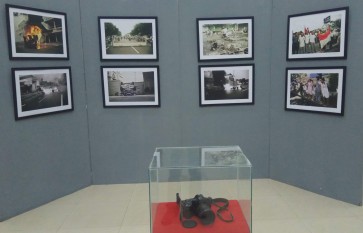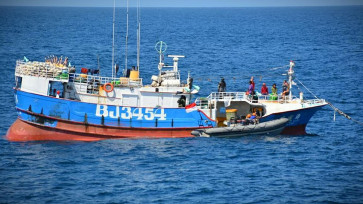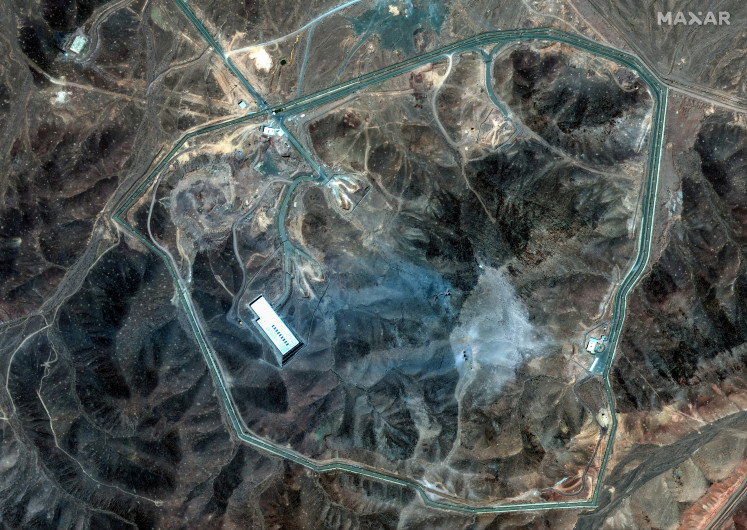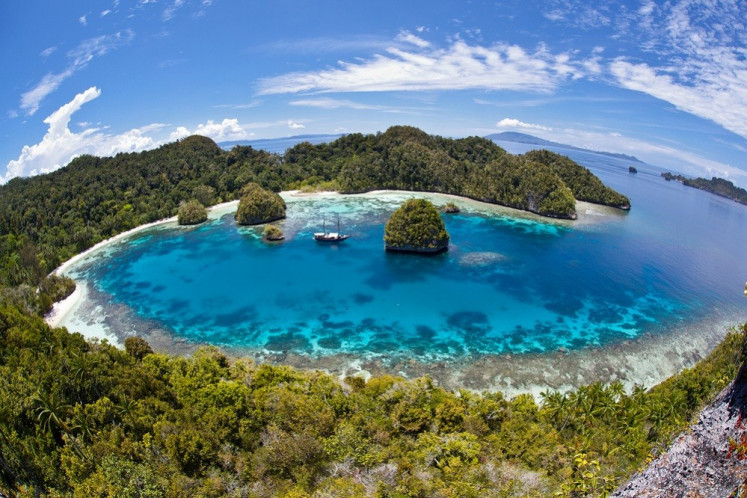Popular Reads
Top Results
Can't find what you're looking for?
View all search resultsPopular Reads
Top Results
Can't find what you're looking for?
View all search resultsKayaking in New Zealand: A classic way to experience nature
Little paradise: Te Pukatea Bay in New Zealand’s Abel Tasman National Park is only accessible by kayak or a half-hour walk off the Abel Tasman Walk near Anchorage
Change text size
Gift Premium Articles
to Anyone

L
span class="caption" style="width: 398px;">Little paradise: Te Pukatea Bay in New Zealand’s Abel Tasman National Park is only accessible by kayak or a half-hour walk off the Abel Tasman Walk near Anchorage.It’s amazing how much you can fit into a double-seated kayak.
Despite an apparent exiguity, the hull can actually hold up to 400 liters, enough to store food, beverages, and the camping gear required for a three-day sea kayaking trip along the Abel Tasman National Park coastline. Provided you pack with care.
So the first instructions our guide Banksie gave us when we met him in Marahau that morning was to empty our backpacks and place our items in sturdy plastic bags that we could squish into our kayak’s bow and stern.
“Do not tie a knot in case you rip the plastic when opening the bags later on. Just twist the loose end tight. And keep your camping and kayaking clothes separate. You’ll be amazed to see your shorts stand on their own after a three-day salt charge.”
It’s precisely that sort of advice, simple yet pragmatic, that smooth the novice’s kayaking experience, that we were looking for when my partner and I signed up with Abel Tasman Kayaks, one of a handful of tour companies based in the region, for a “three-day classic tour” to discover the stunning shores of New Zealand’s South Island northern tip.
Although this destination is renowned for its 51-kilometer walking trail, sea kayaking has been increasingly popular with visitors over the past years. No wonder: The littoral, a contorted string of crescent-shaped coves and convoluted granite headlands, is ideal to explore on boat.
From the ocean, the buttery sand stretch cleaves two layers of green, a lush forest of beech, tea and fern trees on top, and clear emerald water on the bottom. Such a setting is worthy of tropical paradise postcards, only the water is a tad more chilly, a mere 18 degrees Celsius for the last end of December.
After all, Banksie reminds us, we are situated at the 41 degrees of latitude.
A water taxi hauled our crew — a trio of Kiwi women, a German couple, a Dutch veterinary student, the two of us, our guide, our gear and five kayaks — to Awaroa Bay. Trips usually start a little further North, at Totaranui, but low tide meant the nearby inlet was dry. So we bypassed the overly crowded beach entirely and started paddling our way back down the 30 kilometers to Marahau at a leisurely pace, occasionally halting on a beach for a dip and sun-tanning session.
No journey in the Abel Tasman resembles another. The tides, which alter the face of the coastline and bar access to lagoons when ebbing, are one reason. The weather is another. There may not be any ferocious animal in New Zealand, but is the weather fierce and unpredictable!
Occasionally, the roaring 40s will act up and stir 3-meter swells.
“I have been stuck on shore a couple of times. Usually, clients feel excited. Being trapped on a beach adds to the story they’ll tell back home”, Banksie jokes.
Fortunately we were spared treacherous conditions. Apart from a morning of choppy waves which barely gave us a hint of what a storm could amount to, the sun blessed our journey all the way.
It is remarkable that, despite the flock of tourists, it is still possible to find a sense of remoteness and isolation in the park. Some bays, such as Bereton Cove where we had our first lunch, are only accessible by sea. Moreover, the department of conservation which manages the park judiciously capped the number of tents allowed on the 18 campsites so that some feel quite exclusive. Akersten Bay, for instance, only accommodates three tents…

At night, our host transformed into a chef, cooking butter chicken, trifle, burritos and chocolate fudge while we, vacationers, chatted over a glass of a local Marlborough Sauvignon Blanc.
This was definitely not camping rough! We felt spoiled. So it seems quite ironic that when in 1642,
the Dutch seafarer Abel Tasman didn’t linger too long in the nearby Golden Bay where he had anchored his ships.
The first recorded European to have sighted Aotearoa New Zealand lost four men in a skirmish with local Maori. Little did he know that three centuries later, a recreational park would bear his name.
— Photos by Cécile Lepage









